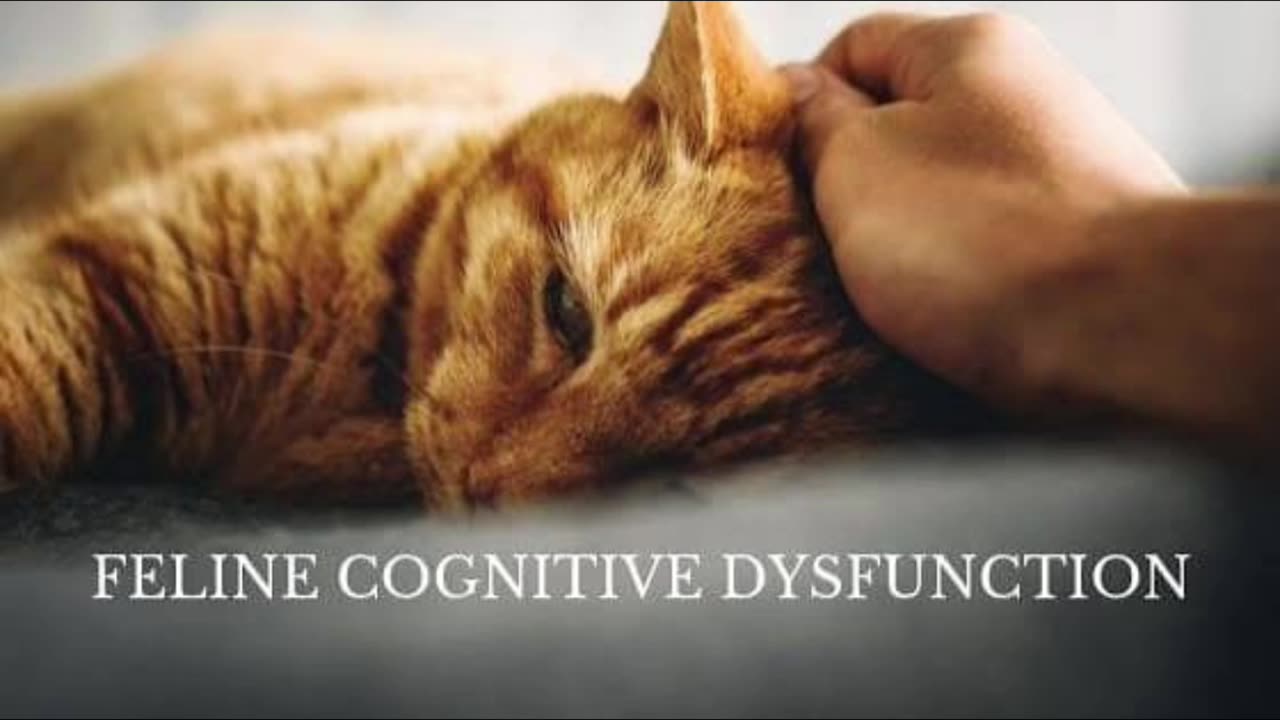Premium Only Content

The Fading Purr: Recognizing Dementia in Senior Cats
#cats #catsofyoutube #pethealth #seniorcats #catlover #catdementia #felinecognitivedysfunction #oldcats #seniorkitty #catcare #veterinaryadvice
As cats age, their physical movements may slow, and their muzzles may gray, but some changes run deeper than stiff joints. Just like humans, cats can suffer from a decline in mental faculties known as Feline Cognitive Dysfunction (FCD) or Cognitive Dysfunction Syndrome (CDS). Often compared to Alzheimer's disease in humans, this condition affects a significant portion of cats aged 10 and older. While it is heartbreaking to watch a beloved pet lose their mental sharpness, recognizing the condition is the first step toward managing it. By identifying the specific behavioral changes associated with dementia, owners can adapt their homes and care routines to ensure their senior companions remain safe and comfortable in their twilight years.
The most immediate and distressing signs of FCD often involve confusion and a disruption of daily rhythms. First, disorientation is a classic symptom; a cat may wander into a corner and appear stuck, forget the location of their food bowl, or stare blankly at walls. Closely related to this is a change in activity levels, specifically aimless wandering or pacing. Instead of purposeful movement, the cat may walk in repetitive circles or pace restlessly, unable to settle. Furthermore, their internal clock may break down, leading to altered sleep-wake cycles. Owners often notice their cat sleeping deeply all day but becoming awake, agitated, and active throughout the night, a reversal that can be exhausting for the entire household.
Beyond confusion, dementia often manifests through changes in personality and communication. Excessive vocalization is one of the most reported signs; seniors with FCD frequently howl or cry loudly, particularly at night. This is often an expression of anxiety or confusion caused by the dark. Additionally, owners should look for drastic changes in social interactions. A once-independent cat may become velcro-like and clingy, seeking constant reassurance, while a formerly affectionate cat may become withdrawn, fearful, or even irritable when touched. These shifts in temperament are not "grumpiness" but often a result of the cat no longer recognizing family members or feeling vulnerable due to their cognitive decline.
The final set of signs affects the cat’s physical habits and hygiene, often signaling that they are forgetting years of training. House soiling, or missing the litter box, is a common red flag; the cat may forget where the box is or simply lose the urge to go there in time. Similarly, a decline in self-care is evident through grooming neglect, resulting in a matted or greasy coat, as the cat forgets the instinct to clean itself. Lastly, changes in appetite can occur, ranging from forgetting to eat to forgetting they have eaten and begging for food immediately after a meal. These physical signs can sometimes mimic other medical issues like kidney disease or hyperthyroidism, making a veterinary diagnosis essential.
While a diagnosis of Feline Cognitive Dysfunction can be daunting, it does not signal the immediate end of a cat's quality of life. Understanding that a cat is not being "naughty" but is rather struggling with a medical condition allows owners to respond with patience rather than frustration. Simple environmental changes—such as adding nightlights, keeping resources like food and litter boxes in consistent, accessible locations, and maintaining a stable routine—can significantly reduce a senior cat's anxiety. With early detection of these eight signs and supportive veterinary care, owners can help their feline companions navigate their golden years with dignity and love.
-
 11:13
11:13
MattMorseTV
17 hours ago $16.06 earnedRINO PLOT just got SHUT DOWN.
13.1K128 -
 31:07
31:07
Camhigby
3 days agoLeftist Claims Gender Goes By Identity, Then FLOUNDERS When Asked This Question!
132K65 -
 LIVE
LIVE
Shield_PR_Gaming
2 hours ago11/22/25 I Let's Level up on Battlefield and other games as well!
482 watching -
 10:21
10:21
MetatronGaming
9 hours agoI spent $200 for this Premium PS5 Controller. Is it worth it?
3.41K6 -
 13:46
13:46
Nikko Ortiz
17 hours agoYour Humor Might Be Broken...
34K5 -
 9:26
9:26
MattMorseTV
1 day ago $41.57 earnedPam Bondi is in HOT WATER.
48K195 -
 16:38
16:38
MetatronGaming
15 hours agoAnno 117 Pax Romana looks INCREDIBLE
76.5K9 -
 3:25:55
3:25:55
DillyDillerson
3 hours agoCAN'T SLEEP | Solo Raids | Trying to level up my workshop | Tips and help are welcome!
4.61K -
 LIVE
LIVE
DynastyXL
3 hours ago🔴 LIVE NOW – ARC RAIDING - BADLY! - NEW RUMBLE WALLET - THOUGHTS?
71 watching -
 2:20:13
2:20:13
Side Scrollers Podcast
21 hours agoVoice Actor VIRTUE SIGNAL at Award Show + Craig’s HORRIBLE Take + More | Side Scrollers
70.6K21